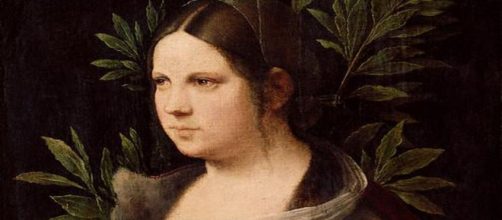A new book – "Giorgione's Ambiguity" by University of Glasgow art historian Tom Nichols – points out that the work of the Renaissance painter, long viewed as without fixed meaning, wanted it that way.
Out of the loop
Well, of course, he did! Don't all serious painters want us to interpret their work for ourselves? Is self-explanatory art worth anyone's time? By saying that Giorgione was intent on making pictures that weren't obvious is like proclaiming that red mixed with blue make purple. Who doesn't know this stuff?
Yet, the headline for The Guardian review of Nichols book asks, "Why Are Giorgione's Paintings So Mysterious, Even Centuries Later?" Don't art experts at the British daily know the answer?
Doesn't every art lover? The only thing mysterious here is the point of Nichols' book.
Rebel without a cause
Unaccountably, the art journal Hyperallergic went to the trouble of figuring out the supposed mystery for us. They concluded that Giorgione sought mystery because of the time and place he lived, when the subject matter in art was either religion or history, "when paintings were self-explanatory, with clear plots and fixed meanings that reinforced the social order." Nichols fell in line with such rationalization, calling Giorgione's work "his radical push against Venetian art world dominated by monumental religious and patriotic works."
But making Giorgione out to be a rebel misses the bigger picture.
He was a painter of mood, of states of mind. Consider Laura - a portrait of an unknown female baring one of her breasts. An art critic for The Guardian, Jonathan Jones, appreciated the work as a mood piece, saying that she shows her anatomy in a "grave, thoughtful way" holding open her robe for all to see. "Laura's erotic self-revelation is calm, almost severe," avoiding eye contact with the viewers. "She is not interested in our gaze - there is something else going on. "
Multiple meanings
That "something else" is up to us. Jones thinks so, too: "Don't expect answers as to what it might be about." My take is that Laura is not pleased with how she was made to pose with her robe open. I think Giorgione saw her reaction and made a point of it.
Of course, you might see it a different way. A good painting always has layers of meaning.
Putting the art back into art history
Jones might have contradicted himself when he said, "Secrecy is what Giorgione's paintings create." But doing the work about secrets takes viewers' will to think their own thoughts and end up pressing them to figure out some established secret—a waste of time. Giorgione freed our imagination to make up our own story. He's not some Twilight Zone mystery man, and it's incomprehensible that Nichols would infer that. Maybe it's the limitation of his area of expertise - art history. Renaissance historian Vasari's perspective was also narrow.
Vasari, who chronicled the artist's life after he died young of the plague, saw Giorgione's work as inscrutable, saying, "I, for my part, have never been able to understand his figures… Heaven knows what it all means." Apathy like that is a non-starter in art appreciation.
.


